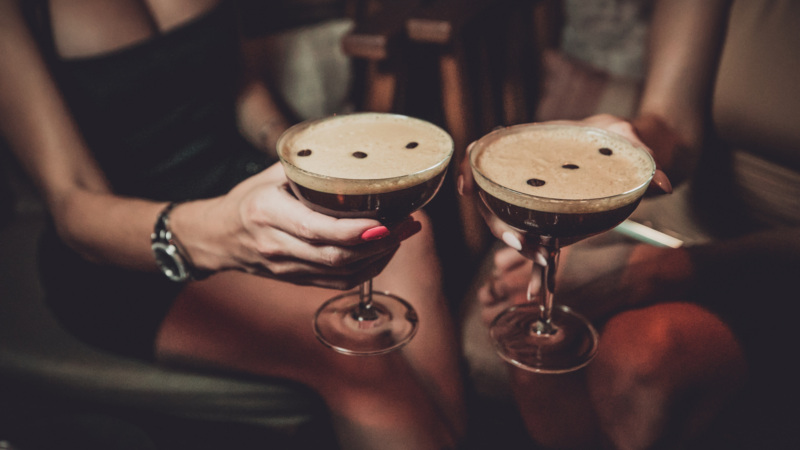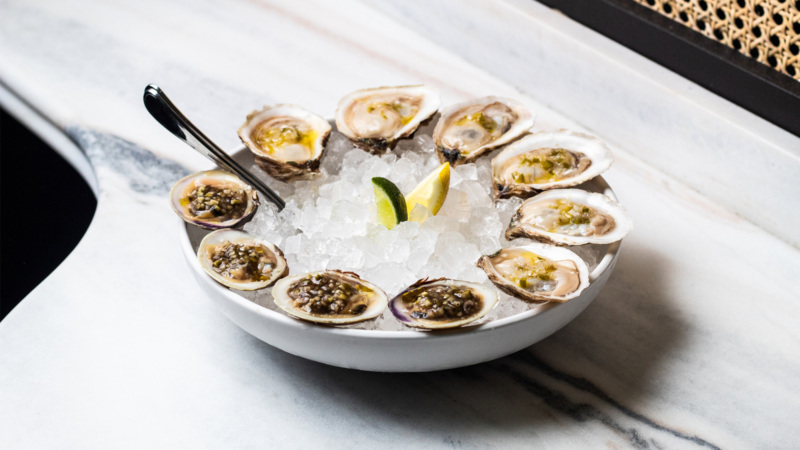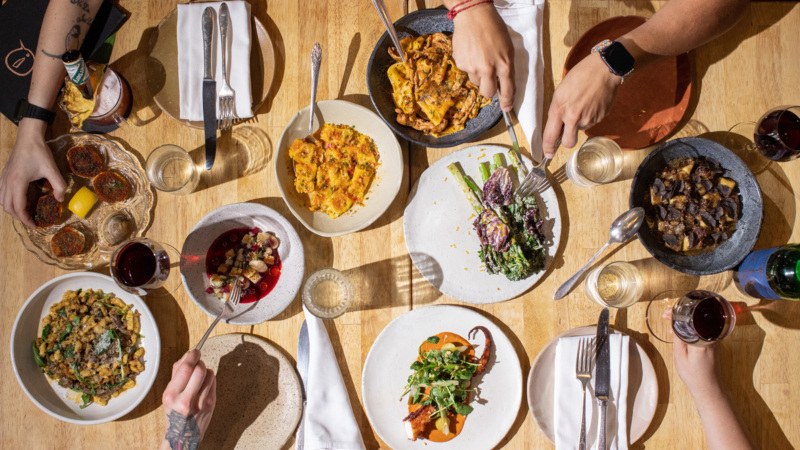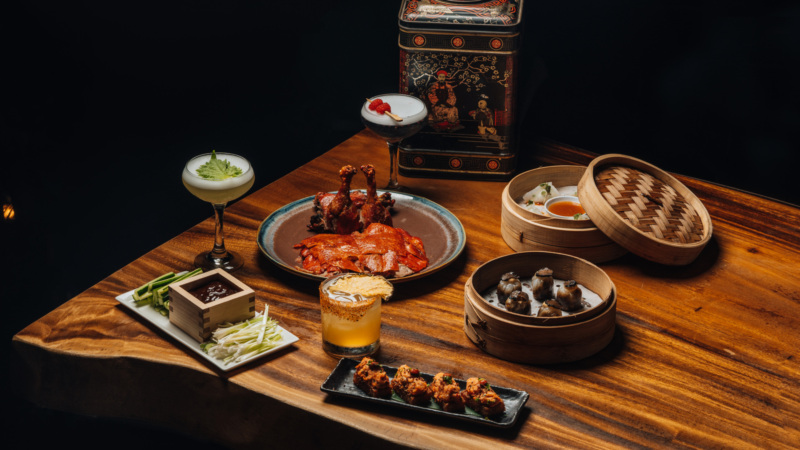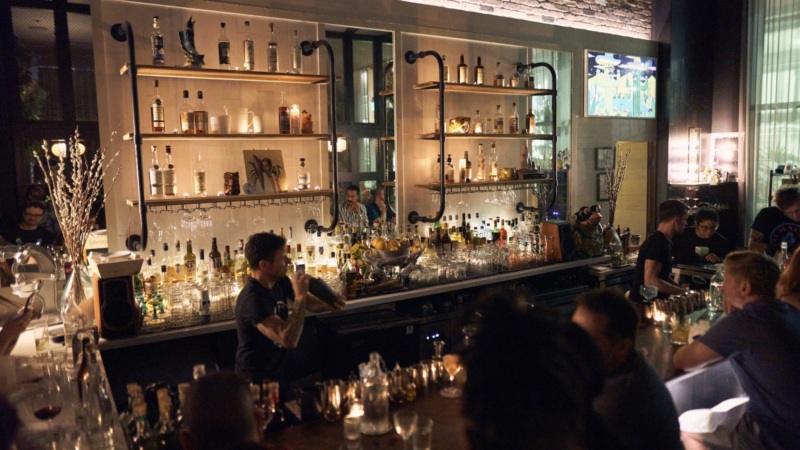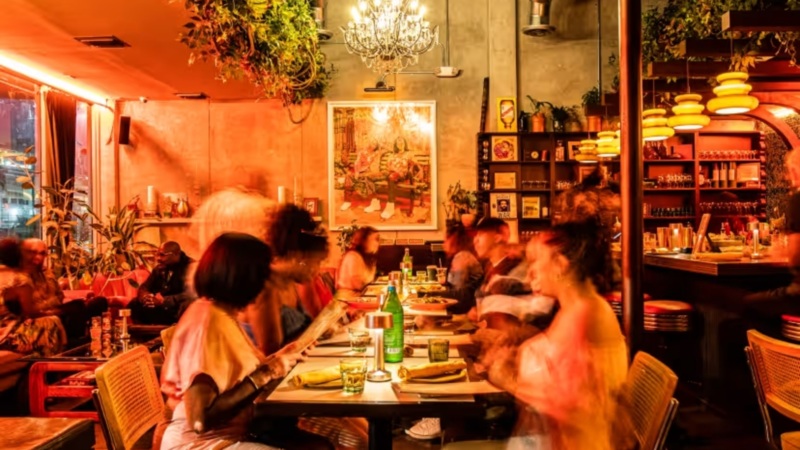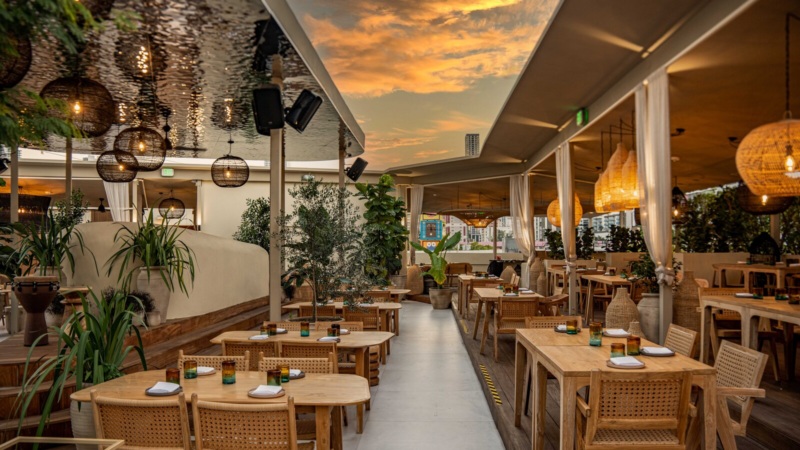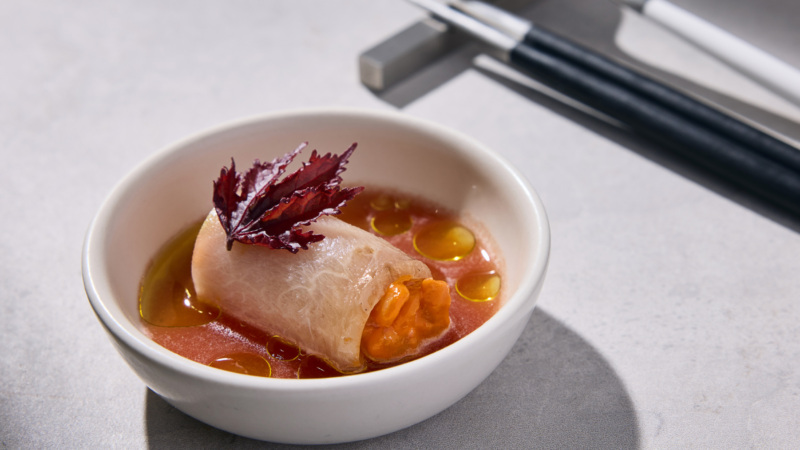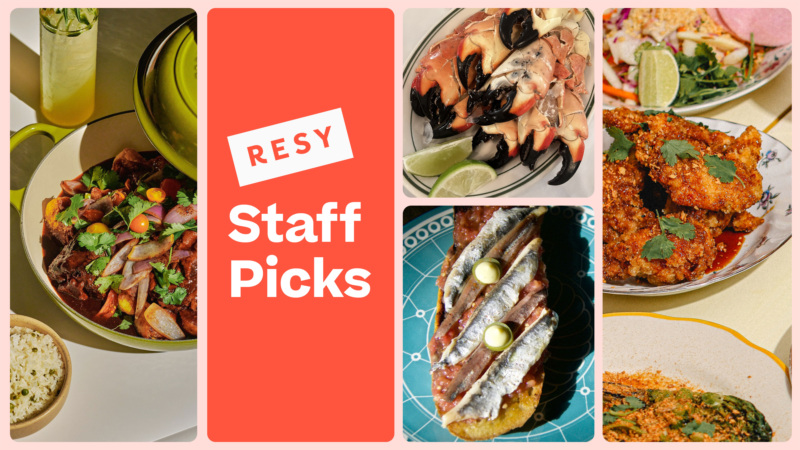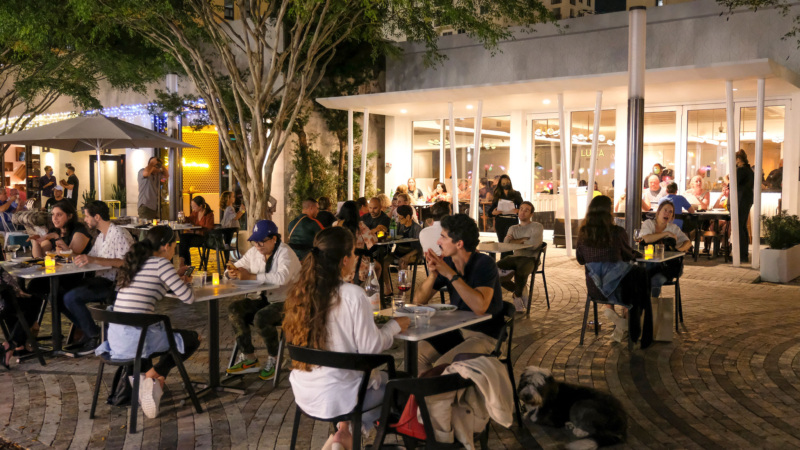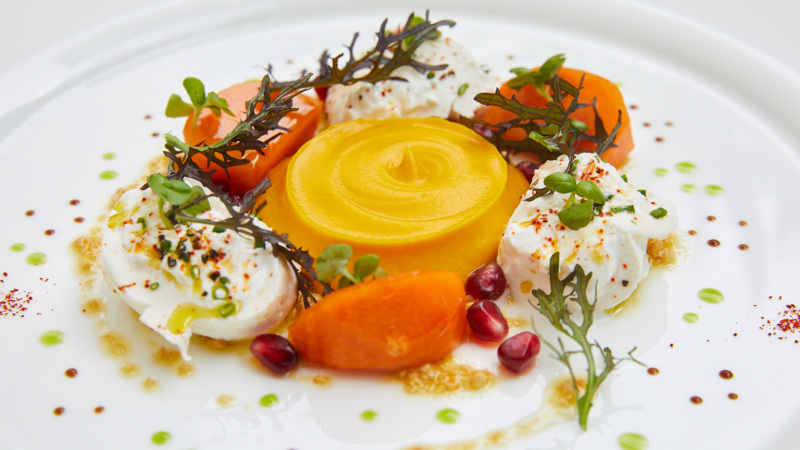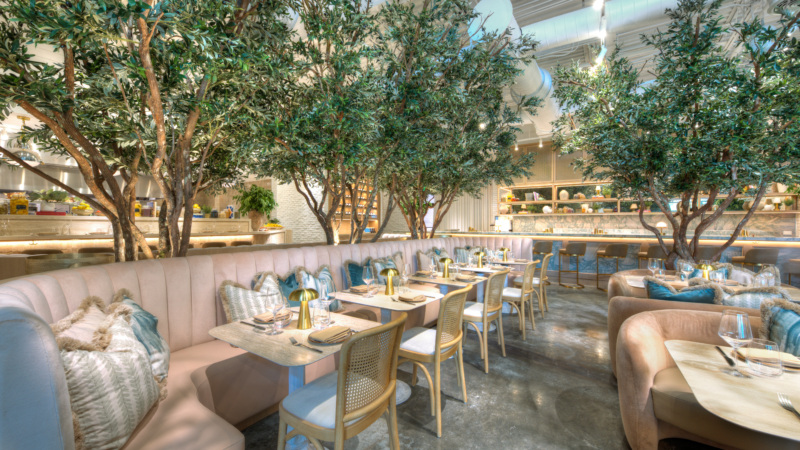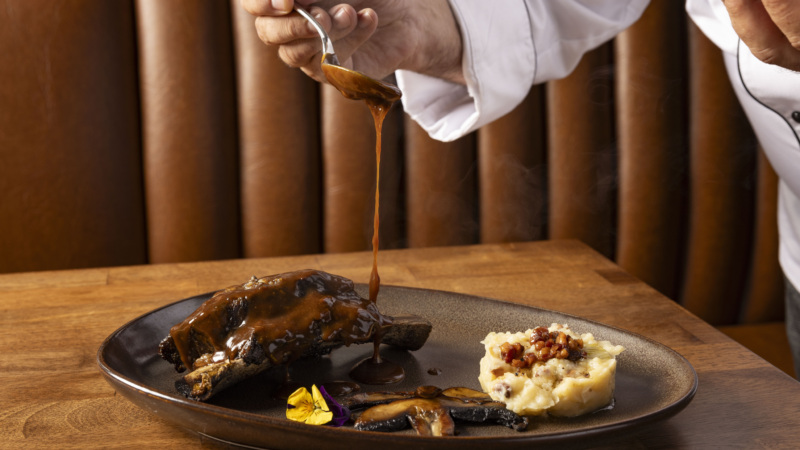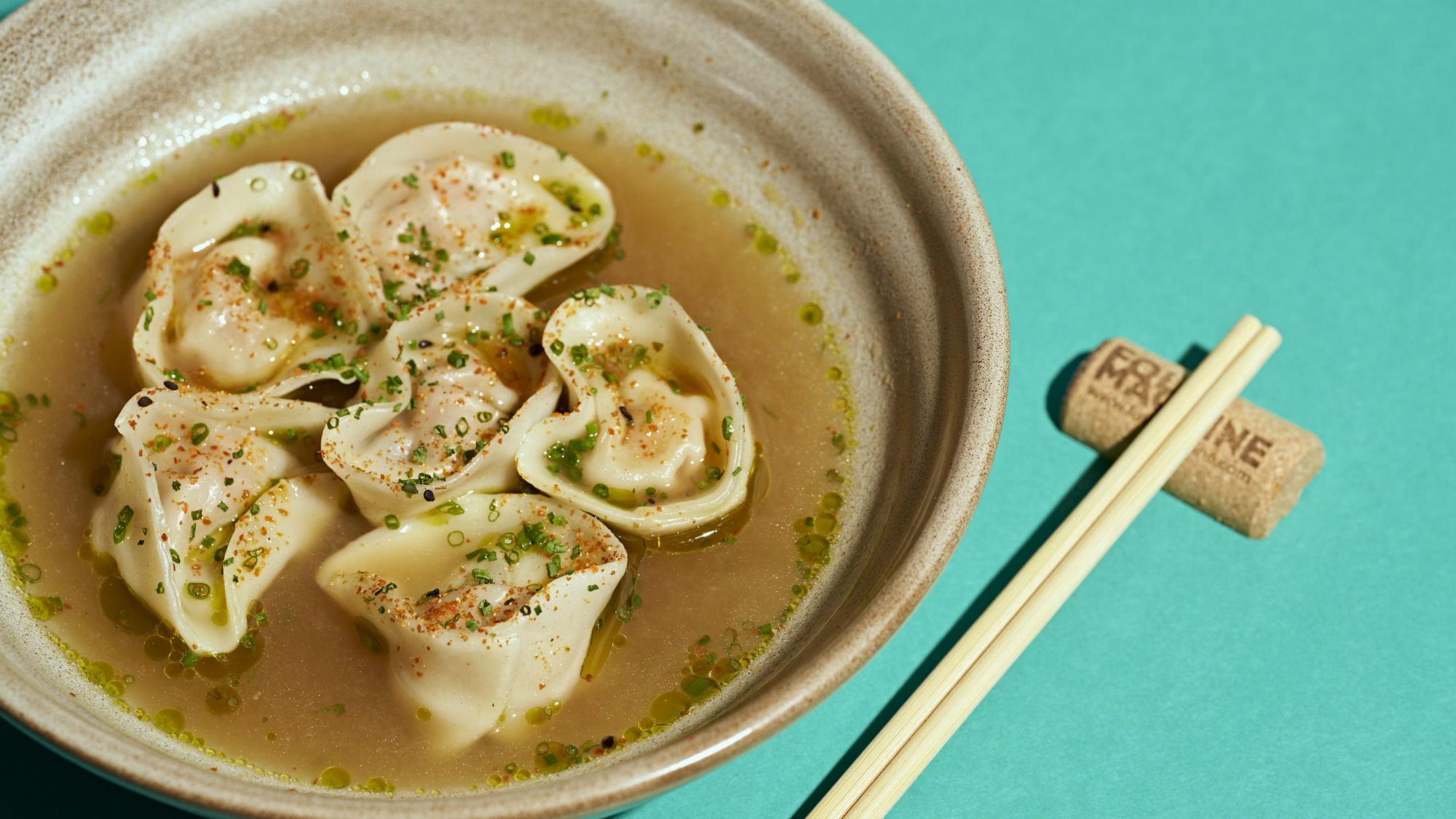
Five Dishes That Tell the Story of Zitz Sum, in Coral Gables
Pablo Zitzmann has cooked in the Miami kitchens of renowned chefs such as Michelle Bernstein and Jean-Georges Vongerichten. But it’s the concept he tested in his apartment kitchen that landed his restaurant Zitz Sum on the James Beard Foundation’s long list of Best New Restaurants this year.
Zitzmann’s culinary journey began in his hometown of Bogotá, Colombia, where he would soak in the flavors of the city’s teppanyaki restaurants with his dad. He furthered his love of Asian cuisines through stages in Honolulu’s Chinatown and in Hong Kong. Those influences — from South America, Asia, and Europe (Zitzmann trained at an Italian culinary school in Colombia) — come together at Zitz Sum in a way that Zitzmann describes as “cultural appreciation,” not appropriation.
“Our approach is, we stick to original recipes but look for ways that inspire us to put a different personality on it and still keep the traditions intact,” Zitzmann says. “I have a strong connection to Italian food, so you’re going to see Calabrian chiles and parsley and Parmesan on dishes. We use them in a way that complements whatever is on the plate without taking it over entirely.”
Zitz Sum started as a pop-up from Zitzmann’s home in 2020, and last year he converted it to a brick-and-mortar on Coral Gables’ Alhambra Circle. The first year-plus involved a lot of trial and error, he says, but with time and the confidence of the Beard boost, the restaurant “has gotten to the point where we’re really finding our voice.”
Here are five dishes at Zitz Sum that speak for themselves.
1. Wonton in Brodo
Zitzmann calls his restaurant’s signature dish “the gateway to everything else on the menu.” Hand-formed chicken-thigh dumplings made with ginger, garlic, scallions, and red pepper bathe in a shallow pool of Parmesan-soy dashi.
“We make a strong dashi, taking all the edges and trimmings from our Parmesan and steeping them,” he says. “We add a little Yamasa soy sauce, pour the dashi on top of the wontons, and finish with some chives and extra virgin olive oil. It’s Italy and China, all good things, all things I like, and it makes sense.”
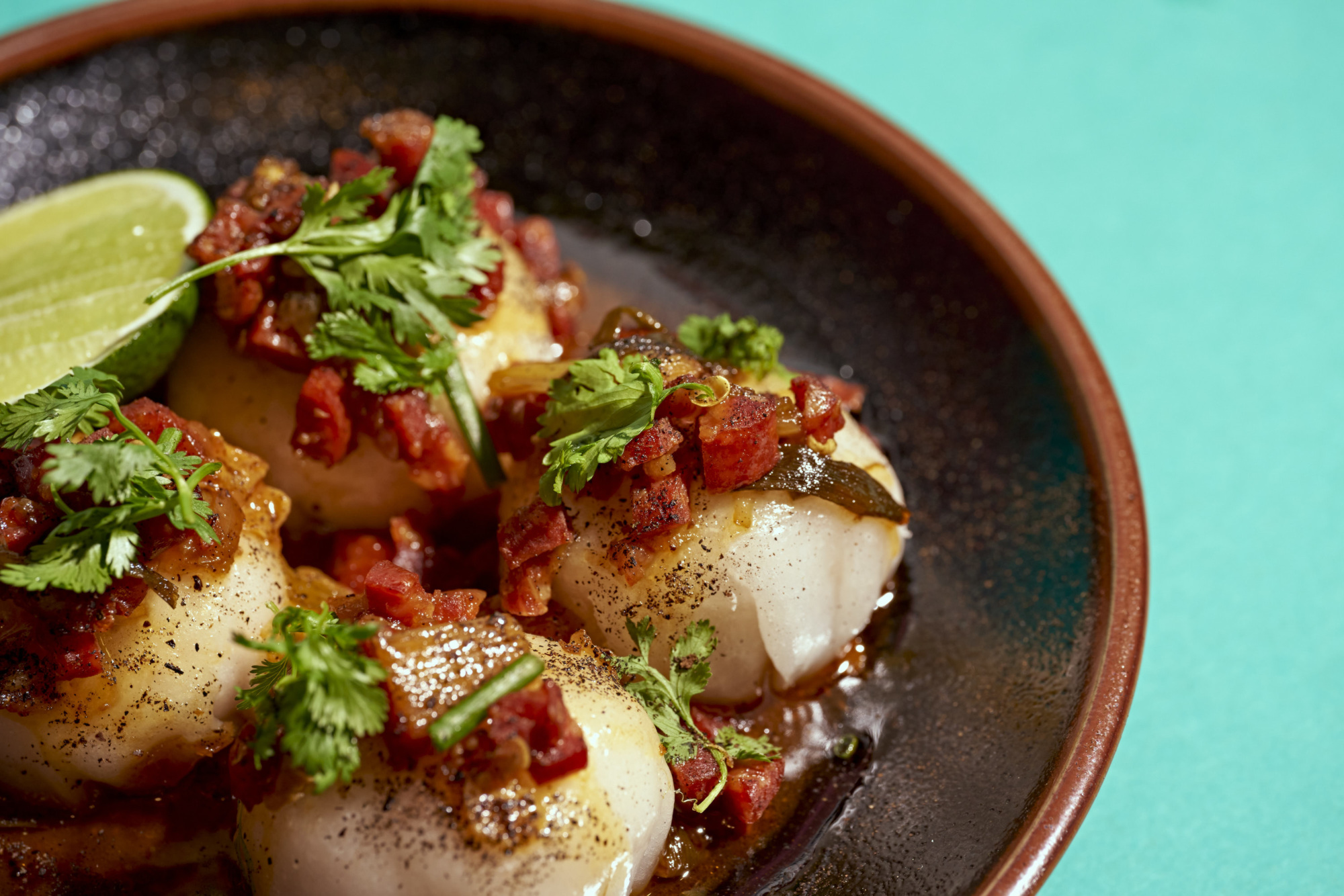
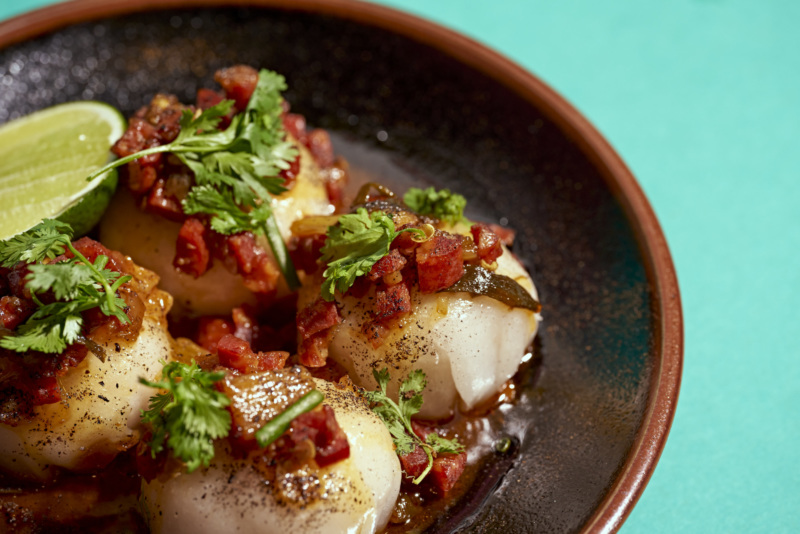
2. Har Gow Shrimp
A few things to know about har gow shrimp dumplings, according to Zitzmann: 1. They are a nightmare to make. “The wrapper is made with wheat starch, tapioca starch, and boiling water, so the dough burns your hands and the wrapper will break on you very easily if you’re not careful.” 2. Their delicate nature means they have to be prepped every day just before service, and it’s all hands on deck in the Zitz Sum kitchen. “Religiously at 4:15 p.m., the whole kitchen crew stops whatever we’re doing and we prep har gow for service. We do 22 orders a night, and they’re usually sold out by 7 p.m.”
Zitzmann’s crew fills their har gow with shrimp and scallop paste, then steams them and tops them with crunchy garlic, Thai basil, lime, and a Calabrian chile vinaigrette. “The chiles and the shrimp go so well together,” he says, “and that squeeze of lime is so refreshing.”
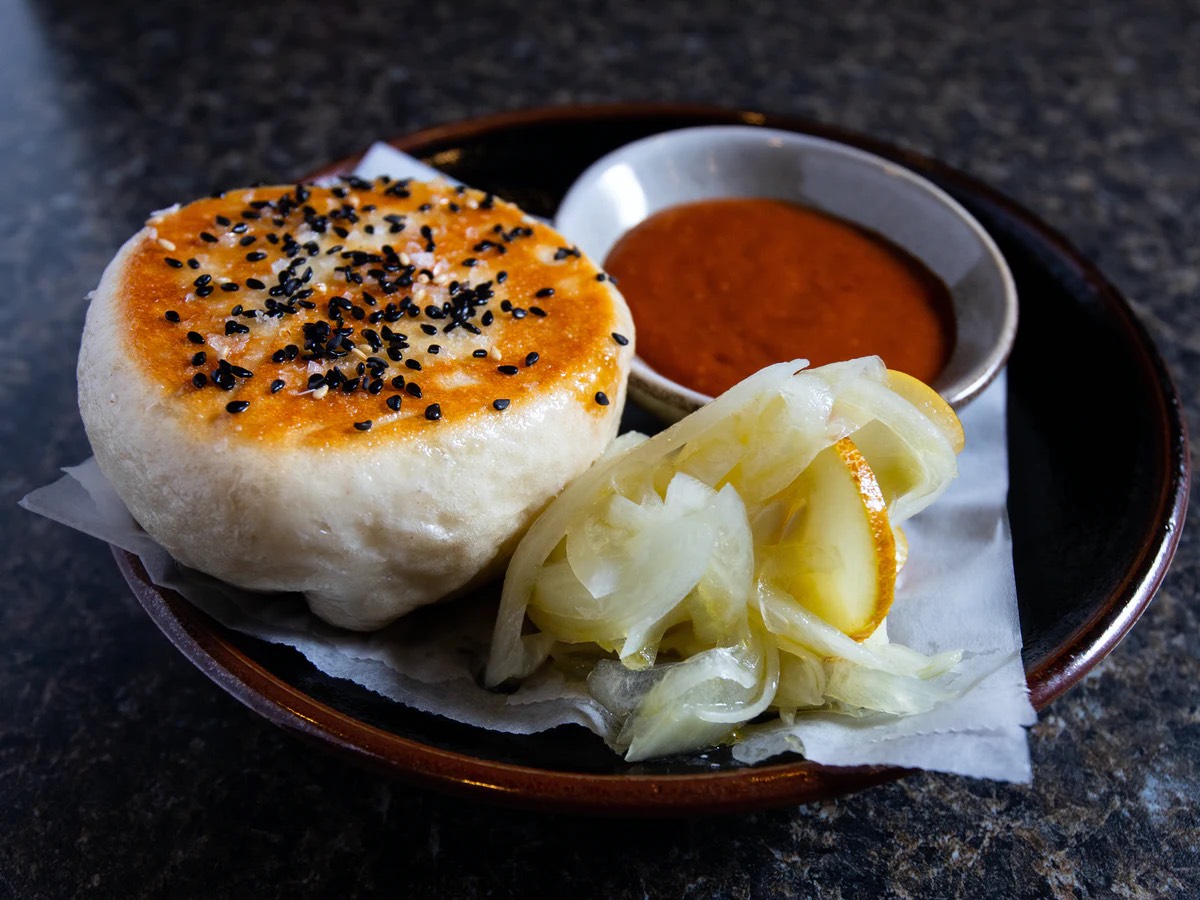
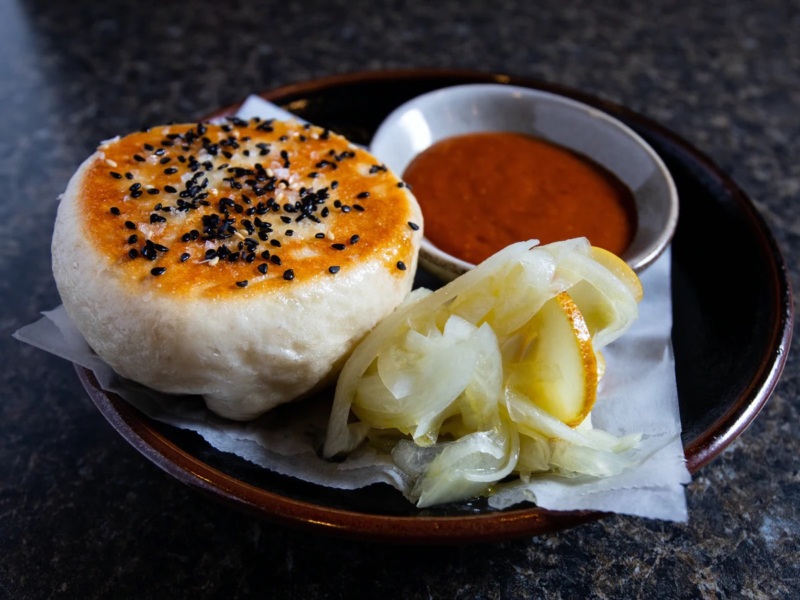
3. Sheng Jian Bao
Zitzmann knew he’d have bao on the menu, but he refused to do pork belly buns, “like every other restaurant.” He played around with Taiwanese-style beef brisket, until beef prices skyrocketed and prompted him to look at other fillings. He decided to make it vegan, starring a quartet of roasted mushrooms — maitake, shiitake, lion’s mane, and trumpet — from Gratitude Garden Farm in Palm Beach County.
The mushrooms get cooked in a ginger-scallion caramel that’s deglazed with sake and fermented chile paste to make a thick, hearty filling. Instead of open-faced bao, Zitzmann’s closed-bun recipe yields a light and fluffy interior under a gently seared, sesame-speckled crust. The mushroom bao is served with pickles and Zitz Sum’s housemade hoisin made with papaya, mango, or whatever fresh fruit is available.
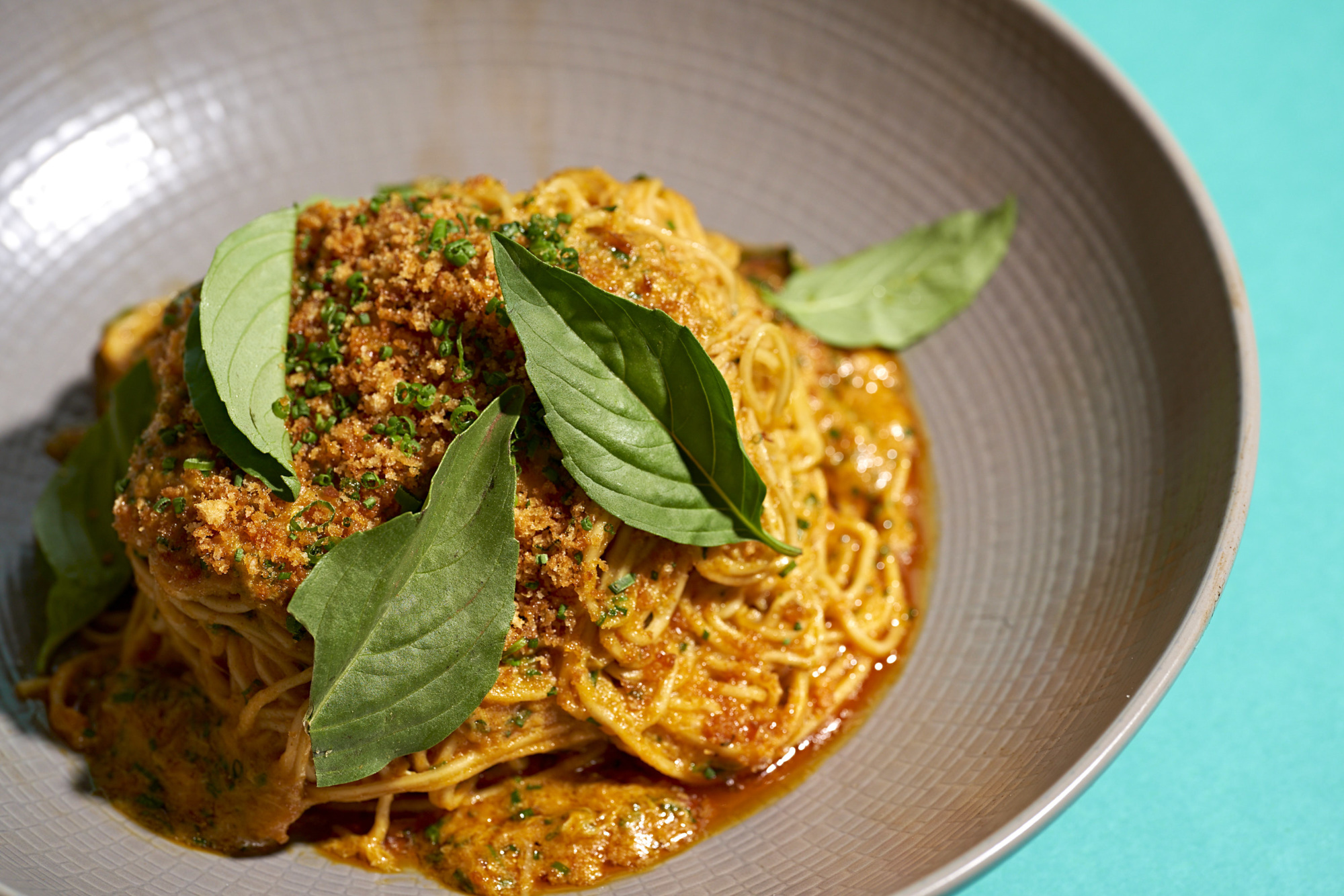
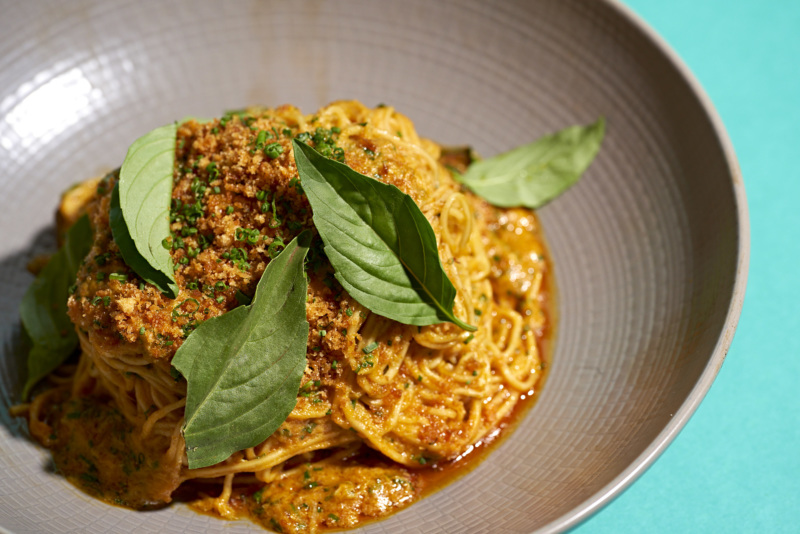
4. Crab Yakisoba
“The dish I cook the most and enjoy the most” is not likely to come off the menu at Zitz Sum anytime soon, Zitzmann says. His inspiration for this comes from Hawaii’s North Shore, where he encountered a crab noodle dish he loved, and Italy’s classic pasta al limone.
“We use nice and thin tonkotsu ramen noodles from Sun Noodle in Hawaii, toss them in a fermented chile and crab curry that we finish off with toasted breadcrumbs, chives, and Thai basil,” he says. “There are nuances of Italy in there that you find in this warm, spicy curry.”
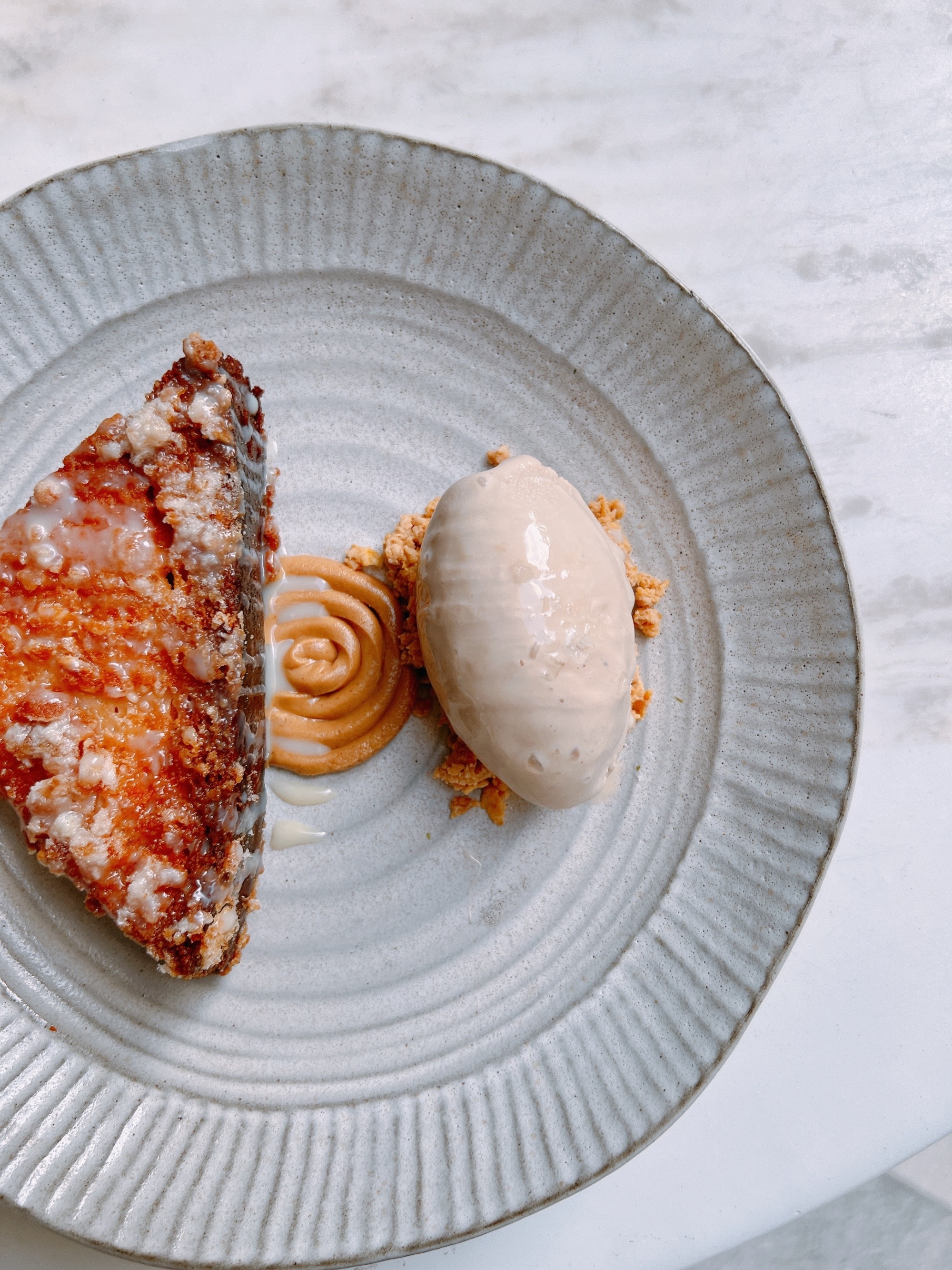
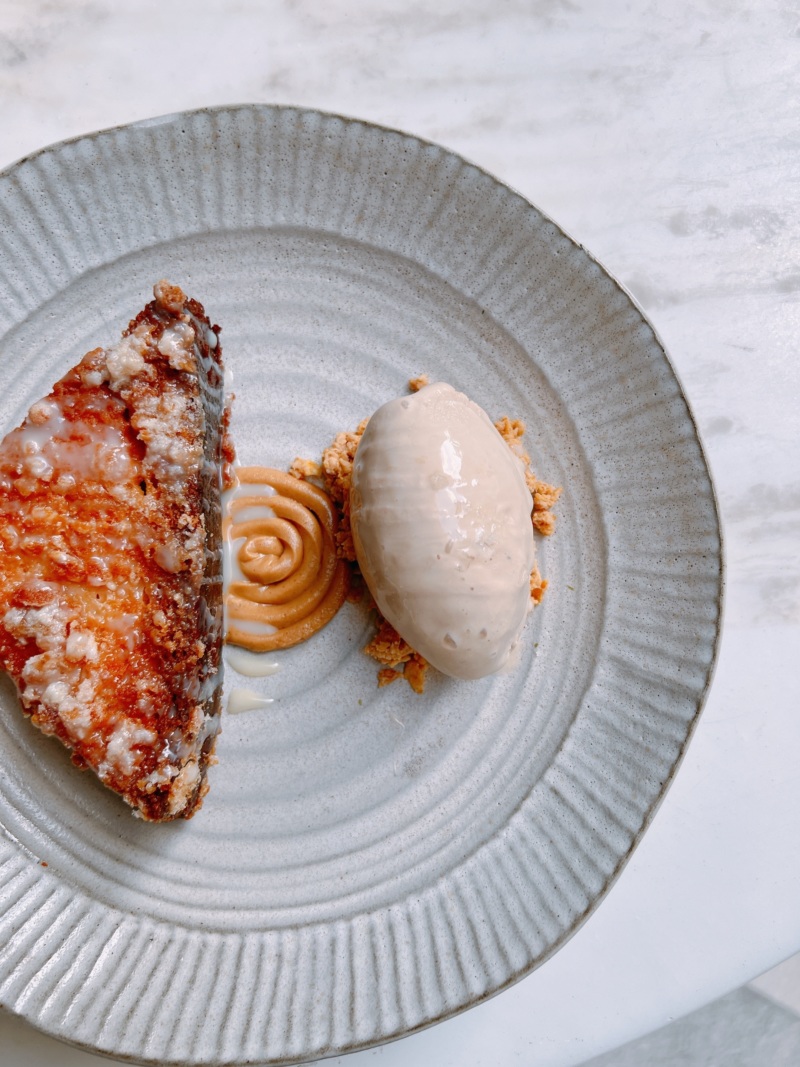
5. Hong Kong-Style French Toast
Before there was Zitz Sum, there was No Name Chinese, the South Miami restaurant where Zitzmann cooked, which closed in 2019 after two years. He didn’t want to put any exact replicas from No Name onto Zitz Sum’s menu, but customers demanded the French toast that pastry chef Natalia Restrepo, his wife and business partner, cooked up. It reminds him of the kind of sweet, American-style desserts he craved and sought out when working in Hong Kong.
“We start with Japanese milk bread that we dry out a bit, then we soak it in a French toast custard — eggs, evaporated milk, vanilla, sugar,” Zitzmann says. “The bread gets coated in mochi flour, cornflakes, and sweet potato flour, then it chills overnight and we deep-fry it. We serve it with a peanut butter crumble and milk iced tea gelato from Frice Cream. It’s hot and cold and sweet and salty, everything you want. Four years later, and that dish that Natalia developed still knocks it out of the park.”
Zitz Sum, 396 Alhambra Circle Suite 155 in Coral Gables, is open for dinner from 5 p.m. Tuesdays through Saturdays. Reservations are available on Resy for indoor and outdoor dining; walk-in diners are also welcome.
Evan S. Benn is director of special projects at The Philadelphia Inquirer and former food editor and restaurant critic of The Miami Herald. Follow him on Instagram and Twitter. Follow Resy, too.


